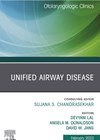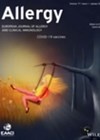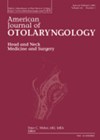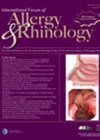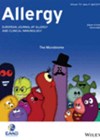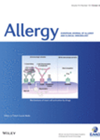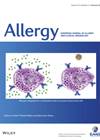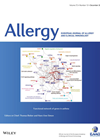
Journal Reviews
How best can we manage Samter’s Triad/AERD?
The classic ‘Samter’s Triad’ of asthma, chronic rhinosinusitis with nasal polyposis (CRSwNP), and aspirin sensitivity is now referred to as aspirin-exacerbated respiratory disease (AERD) or non-steroidal anti-inflammatory-exacerbated respiratory disease. We often come across in our rhinology setting, patients with recalcitrant...
Eosinophilic or not eosinophilic: dupilumab seems to work
Chronic rhinosinusitis with nasal polyps (CRSwNP) is a type 2 inflammation with interleukin (IL)-4, IL-13, and IL-5. Tissue eosinophilia in nasal polyps dramatically increased over a 10-20-year period. Classification of the severity of eosinophil status is expected to lead to...
A new era in the treatment of recalcitrant nasal polyps?
Chronic rhinosinusitis with nasal polyps (CRSwNP) can be difficult to treat effectively in patients with aggressive or recalcitrant disease. Omalizumab (Xolair) is a monoclonal anti-IgE antibody with proven benefits for patients with moderate/severe asthma and CRSwNP, but this study looks...
Simple preoperative tests predicting outcomes for ESS patients?
We are all familiar with patients suffering extensive nasal polyps who relapse all to soon after careful and thorough endoscopic sinus surgery (ESS). This paper looks to answer whether we can predict which patients will do well, and which less...
Location, location, location: How to get the steroid where you need it, in chronic rhinosinusitis
What almost all current guidelines on chronic rhinosinusitis have in common is the importance of intranasal steroid (INCS) use. However, it is increasingly understood that the efficacy of INCS depends on their efficient delivery to the point of need, i.e....
The hippo and the nose
Chronic rhinosinusitis with nasal polyps (CRSwNP) leads to histological changes including thickening of the basilar membrane and epithelial proliferation. Molecular mechanisms underlying these changes are still not fully clear. A signalling pathway called the hippo with Yes‐associated protein (YAP) as...
CRSwNP, another monoclonal antibody
Interleukins 4, 5 and 13 were shown to be important factors in type 2 inflammation, which characterises chronic rhinosinusitis with nasal polyposis (CRSwNP). In CRSwNP non-responders and those who recur short after-surgery monoclonal antibodies might be an answer. Examples include...
Chronic rhinosinusitis, are we treating the same disease?
Chronic rhinosinusitis (CRS) is a heterogenic disease. The effects of heterogeneity on treatment outcome are not very clear. Authors used clinical features such as endoscopic findings scores and full blood count findings in addition to analysis of 35 molecular markers....
Method of delivery: all topical nasal corticosteroids are not made equal
There is an increasing body of evidence that the role of surgery for chronic rhinosinusitis is to facilitate the delivery of topical medical treatment – most notably, topical corticosteroids. Two recent studies, one using flow dynamics and another one examining...
IL-25 and nasal polyps, another target
Immune response in chronic rhinosinusitis with nasal polyps (CRSwNP) is mainly via type 2 T-helper (Th2) cells while Th1 cells characterise chronic rhinosinusitis without nasal polyps (CRSsNP) immune response. CRSwNP is heterogeneous on a cytological level causing a varied response...
Stem cells in nasal polyposis
Chronic rhinosinusitis with nasal polyps (CRSwNP) is common and is multifactorial with increased T-helper 2 response and active role of interleukin 5. It can be associated with asthma and control of CRSwNP improves lower airway disease. Due to constant cellular...

